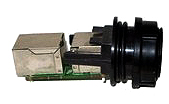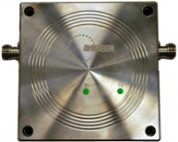Coax Cable is a type of wire that consists of a center wire surrounded by insulating materials and then a grounded shield of braided wire. Coax cable is a cable type used to carry radio signals, video signals, measurement signals and data signals. The shield minimizes electrical and radio frequency interference.
Coax cabling is the primary type of cabling used by the cable television industry and is also widely used for computer networks, such as Ethernet. It is more expensive than standard telephone wire; it is much less susceptible to interference and can carry much more data than a telephone wire.
A coax cable consists of two conductors that share a common axis. The inner conductor is typically a straight wire, either solid or stranded and the outer conductor is typically a shield that might be braided or a foil. Coax cables exist because we can't run open-wire line near metallic objects (such as ducting) or bury it. We trade signal loss for convenience and flexibility.
Coax cable consists of an insulated center conductor which is covered with a shield. The signal is carried between the cable shield and the center conductor. This arrangement give quite good shielding agains noise from outside cable, keeps the signal well inside the cable and keeps cable characteristics stable.
The cable is designed to carry a high-frequency or broadband signal, as a high-frequency transmission line. Sometimes DC power (called bias) is added to the signal to supply the equipment at the other end, as in direct broadcast satellite receivers. Because the electromagnetic field carrying the signal exists (ideally) only in the space between the inner and outer conductors, it cannot interfere with or suffer interference from external electromagnetic fields.
Coax cables may be rigid or flexible. Rigid types have a solid sheath, while flexible types have a braided sheath, both usually of thin copper wire. The inner insulator, also called the dielectric, has a significant effect on the cable's properties, such as its characteristic impedance and its attenuation. The dielectric may be solid or perforated with air spaces. Connections to the ends of coax cables are usually made with RF converter.
Source : Ezine























